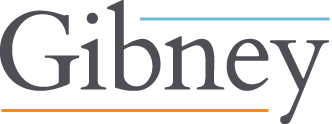The U.S. Department of Homeland Security (DHS) has published an Interim Final Rule (IFR) requiring non-citizens who remain in the U.S. for 30 days or more and were not previously registered to register and be fingerprinted. The rule will take effect on April 11, 2025.
Individuals Required to Register
The regulation primarily impacts undocumented foreign nationals who are not otherwise considered to be already registered.
In addition, Canadian visitors who enter to the U.S. at a land port of entry and were not issued Form I-94 at admission will be required to register if they remain in the U.S. for 30 days or longer.
Of note, non-citizen children under the age of 14 must apply to register and be fingerprinted (unless fingerprinting has been waived) within 30 days of their fourteenth birthday, even if they were previously registered. This requirement applies to both children in non-immigrant status (e.g. H-4, L-2) and to children in lawful permanent resident status.
Individuals with questions on whether they are required to register or re-register should contact immigration counsel.
Individuals Considered Already Registered
Non-citizens who have already registered include:
- Individuals issued immigrant or nonimmigrant visas before their last date of arrival;
- Individuals admitted to the United States as nonimmigrants who were issued Form I-94 or I-94W (paper or electronic);
- Lawful permanent residents;
- Individuals issued an employment authorization document;
- Individuals paroled into the United States;
- Individuals placed into removal proceedings;
- Individuals who have applied for lawful permanent residence using Forms I-485, I-687, I-691, I-698, I-700, and provided fingerprints, even if the applications were denied; and
- Individuals issued Border Crossing Cards.
Individuals Exempted from the Registration Requirement
Exempted from the registration requirement are diplomats and officials in A and G visa status, and certain American Indians born in Canada.
How to Register
Individuals required to register may submit Form G-325R Biographic Information (Registration) which has been made available for online filing through myUSCIS accounts. Submission of the G-325R Registration in myUSCIS initiates the process for scheduling a biometric appointment at an Application Support Center. Upon completion of biometrics, “Proof of Alien Registration” with a unique identifier will be created and posted to the applicant’s myUSCIS account.
For Canadians and children under 14 who are required to register but for whom fingerprinting has been waived, the “Proof of Alien Registration” will be created upon submission of Form G-325R.
In addition to biographic data for the applicant and their family members (spouse and parents), Form G-325R solicits addresses in the past 5 years, activities since the most recent entry, as well as prospective activities the individual expects to engage in until the expected departure.
At this time, no fee is required for submission of Form G-325R. However, DHS has solicited public comment on implementing a biometric services fee of $30 per registrant in the future.
Background
Existing immigration law requires non-citizens who remain in the U.S. for 30 days or longer to register, submit fingerprints (unless waived), carry evidence of registration at all times, and notify DHS of a change in address within 10 days of moving. Historically, enforcement of these provisions – which originate in the Smith Act of 1940 – has been inconsistent.
Consistent with the new Administration’s policy of extreme vetting and immigration enforcement to the full extent of the law, the IFR implements a specific mandate from Executive Order 14159, Protecting the American People Against Invasion, of January 20, 2025, which directed the agencies to announce, publicize and enforce the legal obligation of non-citizens to register.
Registration and fingerprinting: All non-citizens age 14 or older who remain in the U.S. for 30 days or longer are required to register and fingerprint (unless waived). Children under the age of 14 must be registered by their parents/guardians. Upon turning 14 years of age, children (regardless of whether they were previously registered or unregistered) must register and be fingerprinted within 30 days of turning 14.
Carrying evidence of registration: All non-citizens aged 18 or older must carry evidence of registration at all times. Evidence of registration includes:
- Form I-94, Arrival-Departure Record – non-citizens admitted as nonimmigrants; noncitizens paroled into the US under 212(d)(5) of the INA; non-citizens who claimed to have entered prior to July 1, 1924; and non-citizens granted permission to depart without the institution of deportation proceedings;
- Form I-551, Permanent Resident Card;
- Form I-766, Employment Authorization Document (EAD);
- Valid, unexpired nonimmigrant DHS admission or parole stamp in a foreign passport;
- Form I-95, Crewmen’s Landing Permit; Form I-184, Alien Crewman Landing Permit and Identification Card;
- Form I-185, Nonresident Alien Canadian Border Crossing Card;
- Form I-186, Nonresident Alien Mexican Border Crossing Card;
- Form I-221, Order to Show Cause and Notice of Hearing;
- Form I-221S, Order to Show Cause, Notice of Hearing, and Warrant of Arrent of Aliens;
- Form I-862, Notice to Appear, for those noncitizens against whom removal proceedings are being instituted;
- Form I-863, Notice of Referral to Immigration Judge, for those noncitizens against whom removal proceedings are being instituted;
- “Proof of Alien Registration” issued upon submission of Form G-325R and biometrics.
Change of address: All non-citizens must report their change in address to DHS within 10 days of moving.
Penalties
An individual who willfully fails or refuses to apply to register or be fingerprinted may be fined up to $5000 or imprisoned for up to six months, or both. Non-compliance with the requirement to carry proof of registration at all times and to report a change in address is punishable by a fine of up to $5,000 or imprisonment of up to 30 days, or both. In addition, an individual who fails to comply with the change-of-address reporting requirement may be deportable unless the failure was not willful or was reasonably excusable.
Gibney is closely monitoring these developments and will provide additional updates as they are announced. This alert is solely for informational purposes and does not constitute legal advice. If you have questions or require assistance, please contact your Gibney representative or email info@gibney.com.


